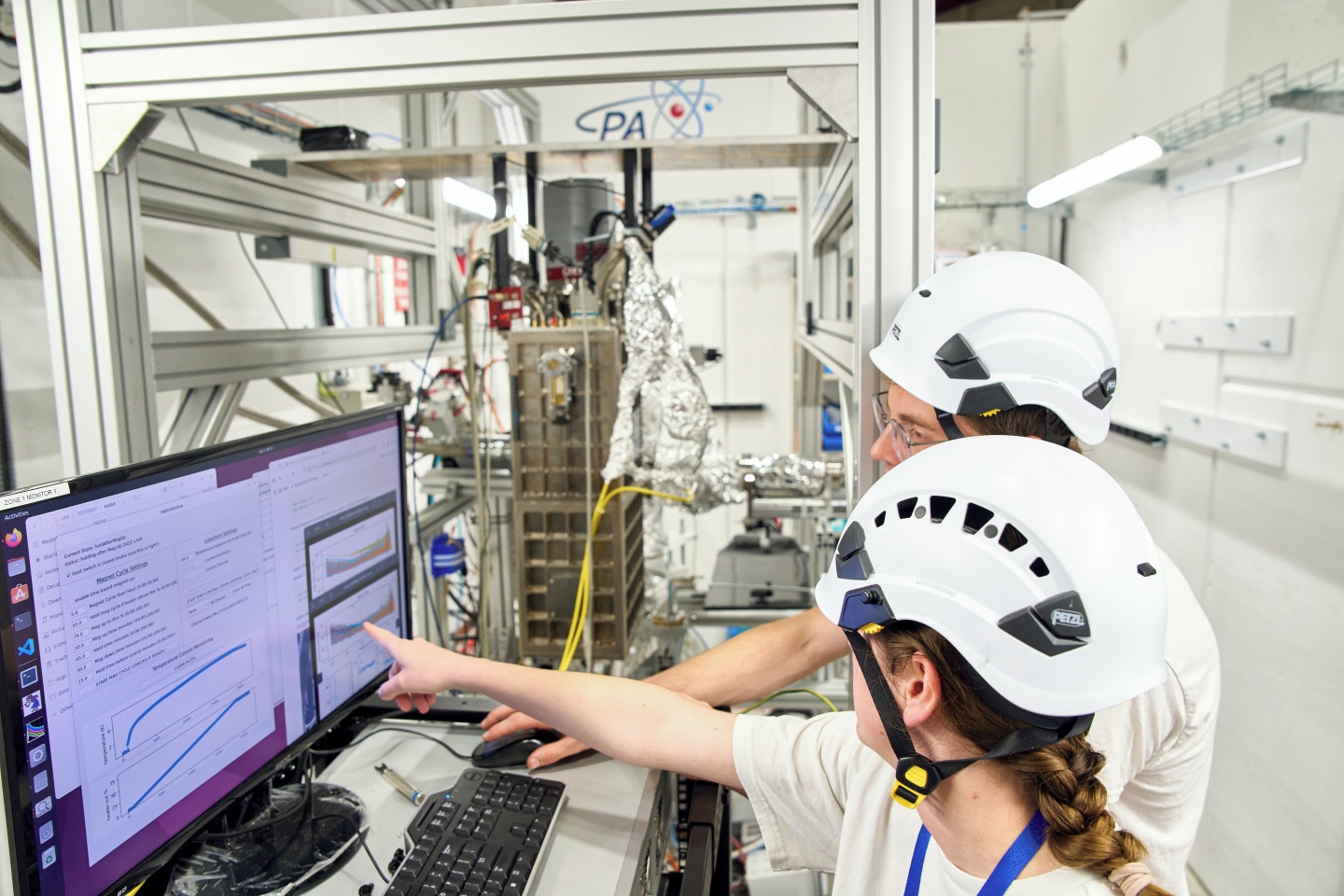
PAX team members monitor the thermometry and raw signal data from the TES x-ray detector in the TELMAX zone at the CERN Antimatter Factory. (Image: CERN)
The PAX (antiProtonic Atom X-ray spectroscopy) experiment is the first to use TELMAX, the new antiproton test beamline at CERN's antimatter factory. It aims to test the theory describing the interactions between light and charged particles, known as quantum electrodynamics (QED), under conditions of intense electric fields. But why these conditions? "Although QED is well understood for light systems such as hydrogen atoms, it hasn't yet been explored in detail for highly charged atoms in the presence of strong electric fields," explains the experiment's spokesperson, Nancy Paul. "This is due to experimental challenges and uncertainties linked to unknown nuclear properties. In fact, the effects of QED are magnified by intense electric fields, and this gives us a better chance of measuring them."
The PAX experiment is being conducted by a team from France's Centre national de la recherche scientifique (CNRS) and is funded by the European Research Council (ERC). It is employing a novel approach, namely very high-precision spectroscopy of the X-rays emitted by antiprotonic atoms, i.e. atoms that contain an antiproton orbiting around the nucleus. By studying the transitions between the various states of these atoms, the team will obtain more accurate results than through other approaches. Two novel technologies are being harnessed in tandem to achieve this: the low-intensity antiproton beams delivered by TELMAX and a quantum-sensing X-ray detector.
To create antiprotonic atoms - atoms in which an electron is replaced by an antiproton - TELMAX's antiproton beam is directed at a solid target (made of zirconium, silicon or gold) or a gas target (neon, argon, krypton or xenon), depending on the case. "These antiprotonic atoms generate Coulomb fields that are much more powerful than those generated by 'conventional' atoms; this is what magnifies the effects of QED," Nancy Paul explains. By studying QED under these special conditions, the collaboration hopes to detect minuscule deviations from the predictions, which could point to unknown phenomena. "The Standard Model of particle physics is incomplete, and precision measurements in quantum systems are crucial to deepening our knowledge of QED and possibly discovering new physics", notes Nancy Paul.
The brand new quantum-sensing X-ray detector used by PAX also improves sensitivity beyond what was previously available with traditional approaches. "For our experiment, we are using a new microcalorimeter X-ray detector based on Transition Edge Sensors (TES). This kind of detector offers energy precision that is 50 to 100 times better than semi-conductor detectors - with attainable accuracies of 1 eV on 100 keV X-rays", she adds. The detector was built by a team from the Quantum Sensors Division of the US National Institute of Standards and Technology (NIST). The same types of detectors are used in areas such as X-ray astronomy on satellites, in the ATHENA project, for example. PAX is the first application of this novel technology for antimatter.






